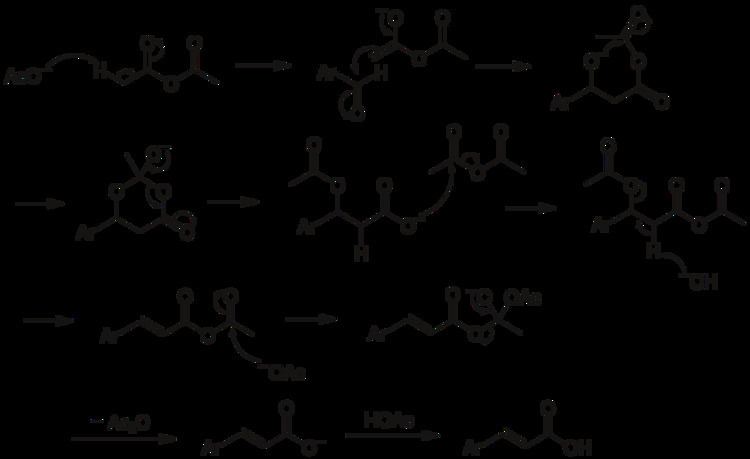Named after William Henry Perkin | Reaction type Condensation reaction | |
 | ||
The Perkin reaction is an organic reaction developed by William Henry Perkin that is used to make cinnamic acids. It gives an α,β-unsaturated aromatic acid by the aldol condensation of an aromatic aldehyde and an acid anhydride, in the presence of an alkali salt of the acid. The alkali salt acts as a base catalyst, and other bases can be used instead.
Contents
Several reviews have been written.
Reaction mechanism
The above mechanism is not universally accepted, as several other versions exist, including decarboxylation without acetic group transfer.
Applications
References
Perkin reaction Wikipedia(Text) CC BY-SA
